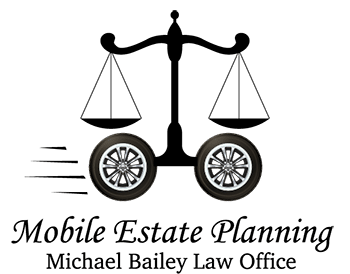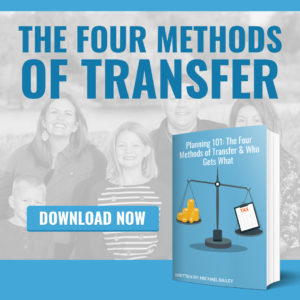
As part of my estate planning practice, I try to educate people concerning issues that may arise in the future, especially for those who are nearing the end of life. I teach a seminar that I call the “Human Ostrich” seminar, where I teach people how to avoid losing everything they have worked so hard to achieve. Human Ostrich is a silly name for my seminar but I wanted to illustrate a point that most people stick their head in the sand as they get older, hoping that bad things won’t happen to them. Often people delay making important decisions because they feel that they are not ready to start thinking about “what if” scenarios. I aim to overcome this type of thinking by presenting what may happen in the future and what you can do to plan ahead.
In the presentation, I talk about how to protect your assets from creditors, especially medical expenses arising from long term care costs. I want to hit the highlights here, and give you an overview of what options are available.
In general, you have two different options to protect assets from creditors, a legal planning way, and a financial planning or insurance as an investment based way. The legal way includes using the type of trust that provides asset protection, whereas the financial planning or insurance as an investment based way involves using leveraged assets to increase the amount of money you have available to spend on long term care. Let’s start with a discussion of the legal way, using asset protection trusts.
Protecting Assets the Legal Way: Using Trusts
There are a lot of different types of trusts. I have previously written about planning for Medicaid and long term care costs using Supplemental Needs Trusts. These types of trusts are designed to protect assets by transferring ownership of the assets into the trust and putting someone besides yourself in charge of the assets, usually a trust child or other family member. If this type of trust is set up in advance of needing long term care, then the assets can be protected from long term care costs, and protected from Medicaid. Long term care costs from a rehabilitation or medical treatment facility or senior living community can be quite high, so planning in advance to protect assets is a good idea.
 These type of asset protection trusts can also have positive effects on the ability to qualify for certain government benefits. For example, if someone is a veteran who served during time of war, in World War II, Korea, Vietnam, or the war on terror, then there may be money available from the VA under what is known as the VA Aid and Attendance benefit. This program has strict asset limits, and those limits need to be planned for to qualify. There are other benefits that may also be available, but I work with a lot of World War II veterans, so this I am most familiar with this benefit.
These type of asset protection trusts can also have positive effects on the ability to qualify for certain government benefits. For example, if someone is a veteran who served during time of war, in World War II, Korea, Vietnam, or the war on terror, then there may be money available from the VA under what is known as the VA Aid and Attendance benefit. This program has strict asset limits, and those limits need to be planned for to qualify. There are other benefits that may also be available, but I work with a lot of World War II veterans, so this I am most familiar with this benefit.
Legal asset protection planning and strategies can work well, but giving up direct control over assets may not be what everyone wants to do. These trusts are different from the typical revocable living trust that can help avoid probate and control assets after a person dies. These types of trust may not work for all assets, or for all people. Often, a person will put real property into a trust, which allows the real estate to be protected, but will also allow financial assets, or monetary type assets, to remain under the control of the individual.
Protecting Assets and Making Them Last: Using Financial Strategies

When you don’t want to give up control of your money and investments to someone else in a trust right now, what can be done with financial assets? Financial assets, such as cash, investments accounts, and retirement account assets can be put into the asset protection trusts described earlier. However, the lack of direct control over these assets can prevent using them for life. If someone is retired and needs access to funds to live on, then those assets may not be great candidates to put into an asset protection trust.
Instead of tying the assets up in a trust, looking at leveraged assets is a good idea. These types of assets allow you to put money into the asset, and receive a higher benefit than what was originally put into the asset.
For instance, if you put $100,000 into a permanent life insurance policy, or the right type of annuity, you may obtain a $200,000 death benefit. If properly structured, you could use access most of the death benefit as a living benefit from one of these types of assets. This would allow you to use something like 90% of the death benefit for living benefits and long term care.
A Real Life Scenario
Using the numbers from my example above, if you put $100,000 into a leveraged asset, and you can then access $180,000 in a living benefit, you are already $80,000 ahead…you get an extra $80,000 to spend on long term care. If you do not use the additional $80,000, then you can pass that money along to your heirs, so that is another way this could benefit you. If you don’t use the extra money for yourself, you can pass it on to your heirs. Of course, you can’t use the extra money for yourself and have it pay out to your heirs, too. That would be getting double benefits, and the companies that pay out don’t want to do that! So, you can’t use $180,000 on your own care and then give $200,000 to your heirs. The calculation would be $200,000 in benefit, minus $180,000 in living benefits, leaving $20,000 for your heirs. Still, you get $200,000 in benefit for putting in $100,000.
Whether you use the money for yourself, or pass more money to your heirs, or some combination of both, either way you win.

What is the Correct Planning Strategy for You?
Of course, there are a lot of factors to consider in choosing what investment vehicle to use for your assets, and a lot of things to consider in choosing what if the right strategy (or strategies) for you. I work with financial advisors to make sure everything is done in the best, most beneficial manner for you, serving your best interests. The proper mix of assets in leveraged accounts, or protected in a trust is best determined by having an individual conversation about what you want to do.
You can schedule an individual appointment here. If you are interested in seeing my full presentation, or in having me give my presentation to a group you think would benefit from the presentation, please contact me and let me know of your interest. Thank you.


 720-730-7274
720-730-7274









[…] accounts have beneficiary designations – that will even override a will. As discussed here, some of these assets can be used as leveraged assets to improve your own financial situation and […]